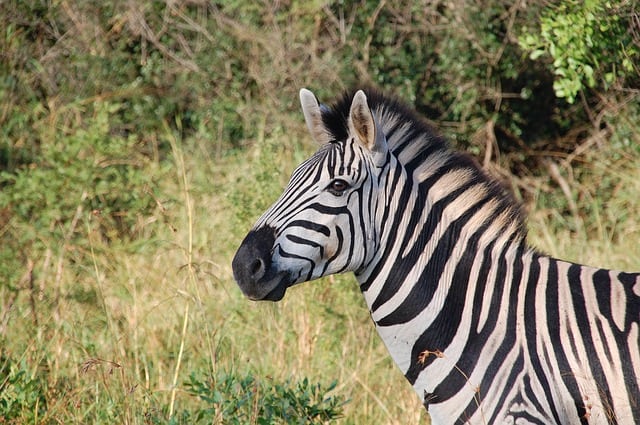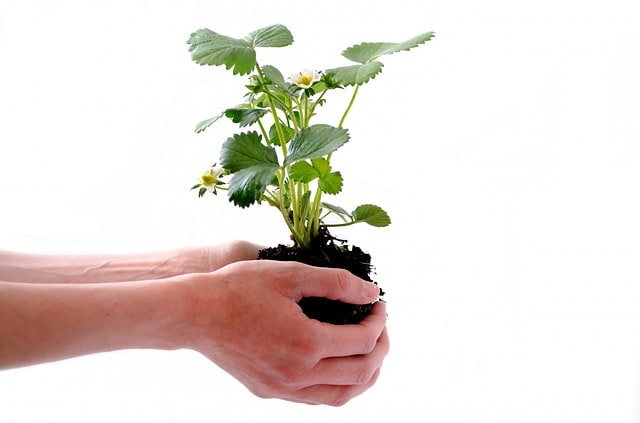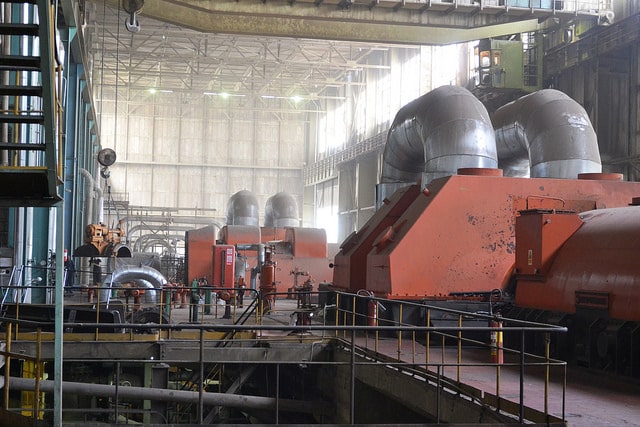Trophic Levels and Energy Flow in a Food Chain

In all ecological communities, living organisms feed to get the energy that sustains their growth, movement, and reproduction. Accordingly, communities of organisms have to feed on each other creating a system whereby each organism is eaten and, in turn, it is eaten by another organism. This system is what is widely known as food chain. Food webs connect many different food chains, and many different trophic levels. Food webs can support food chains that are either too long and complicated or too short.
According to the biological definition, food chain is the feeding relationship that transfers energy from one trophic level to another in an ecosystem. Typically, green plants make their own food by using the sun’s energy, smaller insects, and some bigger animals feed on the green plants, predators and carnivores then feed on insects and bigger animals, and the chain goes on through all the top consumer categories.
Food chains often follow a sequence of one path, with an arrow pointing the eater – used to indicate the flow of energy. A network of complex and many food chains is termed as a food web since the energy flow takes many different paths.
Example of food chain: green plants make their own food with the help of photosynthesis, rabbit eats the grass, snake eats the rabbit, an eagle (apex predator) eats the snake, a hawk (another apex predator) may prey on the eagle, a vulture may consume the dead hawk and finally when the vulture dies, decomposers such as worms and mushrooms break down on its body which provides nutrients back to the soil which is essential for plants to grow.
According to EnchantedLearning,
“A food chain is the sequence of who eats whom in a biological community (an ecosystem) to obtain nutrition. A food chain starts with the primary energy source, usually the sun or boiling-hot deep sea vents. The next link in the chain is an organism that make its own food from the primary energy source — an example is photosynthetic plants that make their own food from sunlight (using a process called photosynthesis) and chemosynthetic bacteria that make their food energy from chemicals in hydrothermal vents. These are called autotrophs or primary producers.“
What are the Trophic Levels of Food Chain?
In a food chain, the energy transfer levels are known as trophic levels. In other words, the trophic level is the position occupied by an organism in a food chain. The levels are broadly grouped into three including producers, consumers, and decomposers.
Producers (autotrophs) are the plants and algae that manufacture their own food from the sun’s energy and nutrients from the soil. Consumers (heterotrophs) cannot produce their own food and have to feed on others to obtain energy. Decomposers and detritivores break down dead plants and animals to release the energy back into the ecological system.
The categorization begins from the lowest to the highest energy transfer levels as elaborated below.
The Sun
The sun is the number one source of all the energy in the food chain because it is the sun’s light along with carbon dioxide and water that the green plants use to make their own food via photosynthesis. This is how the green plants acquired the name primary producers or autotrophs.
Primary consumers
Primary consumers constitute the second trophic level, and they are the organisms (Like cow that eats grass) that consume green plants. Herbivores are the predominantly animals in this category. Examples include sheep, rabbits, cows, giraffe, zebras, gazelle, caterpillars, and some insects.
Secondary consumers
Secondary consumers make up the third trophic level, and they are the animals (Like snake that eat rabbits) that eat up the primary consumers. Majority of the animals in this category are carnivores. Examples include cats, tigers, dogs, wolf, lions, leopards, snakes, and foxes.
Tertiary consumers
Tertiary consumers occupy the fourth trophic level of the food chain. The tertiary consumers are the animals that eat Secondary Consumers and are are eaten by Quaternary Consumers. They mainly include carnivores that feed on other carnivores, especially the secondary consumers. Examples are eagles and snakes.
Quaternary Consumers
Quaternary Consumers are at the fifth trophic level. They majorly prey on animals below them for food including secondary and tertiary consumers. Examples include white sharks, hawks, the golden eagles, and even humans.
Apex Predators
The apex predators are at the highest trophic level. Apex predators top the food chain because they have no predators or natural enemies. They feed on other animals at will. Examples of apex predators include crocodiles, sharks, whales, owls, snakes, wildcats, and eagles.
Decomposers and Detrivores
Decomposers and Detrivores make up the last part of food chains. Dead organisms are often eaten up, and the nutrients are recycled so that they can be used again by primary producers to manufacture food. The organisms responsible for this are termed as decomposers or detrivores. Examples of detritivores include crabs, vultures, and worms while decomposers include fungi and bacteria. These organisms start the cycle once again by returnign the nutrients back in to the soil for use by autotrophs.
How is Energy Transferred in Food Chain?
Energy transfer in the food chain is from one trophic level to next. However, not all the energy is transferred as some of it is used for movement, growth, or reproduction repair. The energy flow begins from the primary producers that make their own food by using the solar energy through photosynthesis. In photosynthesis process, the solar energy is converted into chemical energy which is partly used by the plants and the rest stored as carbon compounds.
In any food chain, energy is lost each time one organism eats another. It is therefor necessary, that we have more plants than plant eaters. There have to be more autotrophs than hetrotrophs. The animals in the food chain are interdependent on each other. Each time an organism goes extinct, it disrupts the entire food chain that can have unpredictable consequences.
The energy is then taken up by primary consumers that include the herbivores and omnivores. These organisms acquire the energy by ingesting the plant materials and digesting it in their system to assimilate the stored energy into their bodies.
When secondary consumers eat the primary consumers that have acquired the stored energy from primary consumers, they acquire the assimilated energy. This means the energy is transferred from primary consumers to secondary consumers. As animals in the higher trophic levels such as tertiary and quaternary consumers eat other lower animals for food, the energy is successfully transferred to them.
The energy transfer efficiency through the trophic levels is about 10% and not 100% as the rest is lost in growth, movement, waste, or respiration. So, it means that as the food moves further through the trophic levels, the energy transferred becomes less and less since most of it is lost.






